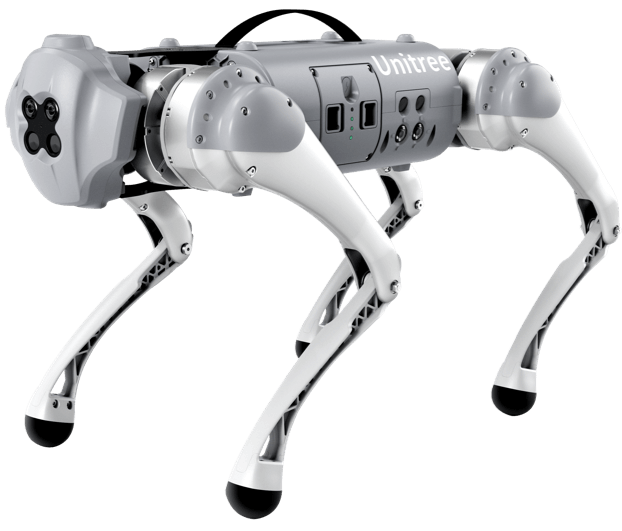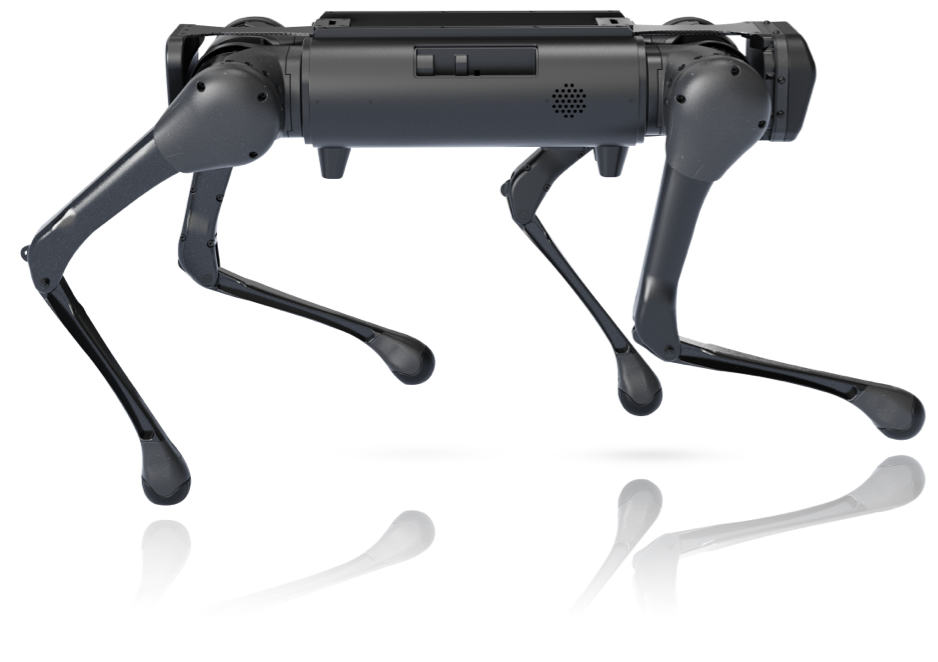Unitree Technology has rapidly emerged as a leader in the field of quadruped robots, drawing significant attention both within China and globally. The company’s advancements in robotics have been propelled by cutting-edge technical breakthroughs, a diverse product portfolio, and an unwavering commitment to pushing the boundaries of artificial intelligence and robotics. In this article, we’ll explore Unitree’s technological innovations, its diverse product matrix, real-world use cases, and its exciting future prospects.I. Technical Breakthroughs: From the Laboratory to the Real World
Unitree’s success can be attributed to its constant focus on technological advancements. The company’s engineering team has developed several key innovations that have allowed its quadruped robots to perform in various environments with remarkable efficiency and agility.
1. High-Performance Motor
The foundation of Unitree’s quadruped robots lies in their powerful and efficient motors. These motors, designed and engineered specifically for robotic applications, offer high torque and efficiency. As a result, the robots exhibit superior mobility, stability, and adaptability to various terrains. The high-performance motors allow for fast and precise movements, enabling the robots to perform a range of complex tasks with ease.
2. Advanced Algorithms
Unitree robots are powered by a suite of advanced algorithms that ensure smooth and responsive movement. These algorithms allow the robots to adapt in real-time to their environment, enabling them to avoid obstacles, maintain balance, and navigate complex terrains. Whether it’s walking on uneven surfaces or climbing stairs, Unitree robots can execute tasks autonomously, thanks to the seamless integration of these algorithms.
3. Modular Design
Unitree has adopted a modular design for its robots, allowing for greater flexibility and scalability. This design approach enables easy customization, upgrades, and maintenance, making it easier for businesses and consumers alike to tailor the robots to their specific needs. The modularity also supports rapid development cycles, ensuring that new features and improvements can be integrated quickly.
II. Product Matrix: To Meet Diversified Needs
Unitree offers a wide range of robotic products that cater to different needs and industries. From lightweight entertainment robots to highly advanced models designed for industrial applications, Unitree’s product matrix is diverse and robust.
1. Go1 Series
The Go1 series is one of Unitree’s most well-known products, designed for entertainment and personal use. These robots are equipped with agile mobility systems that allow them to move with precision and speed. The Go1 series is ideal for both professional use and for consumers who want to experience the future of robotics in their everyday lives. With interactive capabilities and a sleek design, the Go1 robots have made a significant mark in the consumer robotics market.

2. B1 Series
The B1 series represents a step up in terms of performance, catering to more serious commercial and industrial applications. With a more rugged design and enhanced capabilities, the B1 robots are ideal for tasks in environments that demand robustness and reliability. These robots are equipped with advanced sensors and control systems, making them suitable for industries such as security, logistics, and field research.
3. Aliengo Series
The Aliengo series is one of Unitree’s flagship products, boasting high mobility, powerful performance, and exceptional adaptability. The Aliengo robots are designed for demanding industrial and scientific applications, including research, exploration, and advanced industrial tasks. With enhanced sensor integration and high computational power, the Aliengo series is capable of performing complex, precision-driven tasks that are vital for industries such as manufacturing, logistics, and surveillance.

III. Use Cases: From Entertainment to Industrial Applications
Unitree’s robots are not limited to a single sector. Their versatile design and advanced capabilities make them suitable for a wide range of applications, from entertainment to security to industrial operations.
1. Entertainment Companion
Unitree robots have found a growing market in entertainment, where their ability to interact with users and perform engaging movements has proven popular. The Go1 and Aliengo series, in particular, are often used as interactive companions at events, exhibitions, and shows. These robots can engage in playful activities, entertain crowds, and even participate in games or demonstrations, making them an exciting addition to the entertainment world.
2. Security Patrol
Unitree robots are increasingly being deployed for security purposes. The B1 series, equipped with high-resolution cameras, thermal sensors, and real-time data transmission capabilities, is well-suited for security patrols. These robots can autonomously patrol properties, detect intrusions, and provide valuable surveillance data to security teams. They are capable of navigating complex environments, including office buildings, warehouses, and even outdoor terrains, ensuring comprehensive coverage of large areas.
3. Logistics and Distribution
In the logistics industry, Unitree robots are proving to be valuable assets. The company’s robots, especially the B1 and Aliengo series, are utilized for tasks such as goods transportation, inventory management, and distribution. With their ability to carry payloads and navigate complex environments, they are a reliable and efficient solution for optimizing warehouse and distribution center operations. They also offer significant advantages in terms of cost reduction and increased operational efficiency.
4. Survey and Exploration
Unitree robots, with their adaptability and sensor integration, are being used for surveys and exploration. Whether it’s conducting environmental surveys in remote areas or exploring hazardous zones like disaster sites, Unitree robots can gather crucial data and perform tasks that would otherwise be dangerous for humans. Their ability to navigate rugged terrain and maintain stability under challenging conditions makes them indispensable tools for exploration and research purposes.
IV. Future Prospects: Leading the Development of the Robot Industry
Unitree’s commitment to innovation and technological development positions the company as a major player in the future of the robotics industry. Looking ahead, Unitree is poised to lead the way in the evolution of quadruped robots, focusing on continuous technological breakthroughs, application expansion, and ecosystem development.
1. Technological Breakthrough
Unitree is heavily invested in the ongoing development of more advanced technologies. Future iterations of its robots will likely see improvements in AI, machine learning, and sensor integration, enabling robots to perform even more complex tasks. These advancements will further enhance the robots’ autonomy, intelligence, and adaptability, pushing the boundaries of what quadruped robots can achieve.
2. Application Expansion
Unitree has only scratched the surface of the potential applications for its robots. In the future, we can expect to see its products being deployed in even more industries, including healthcare, construction, and agriculture. The expansion of robot capabilities to these fields will open up new opportunities for Unitree to offer value-added solutions across multiple sectors.
3. Ecological Construction
The future of robotics is not just about individual products; it’s also about creating an interconnected ecosystem of robots and technologies. Unitree aims to contribute to the development of a robotics ecosystem that includes hardware, software, and cloud-based services. This interconnected system will allow businesses and consumers to leverage the full potential of robotics, offering more integrated, scalable, and efficient solutions across various industries.

